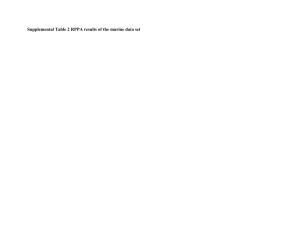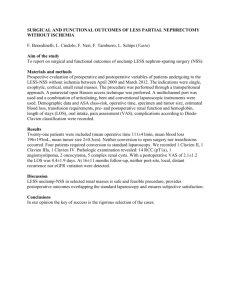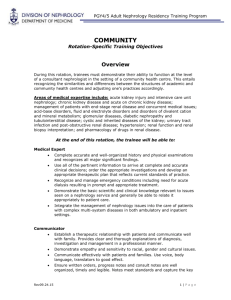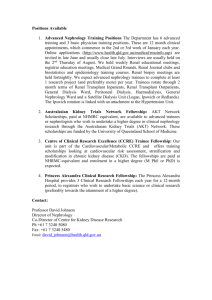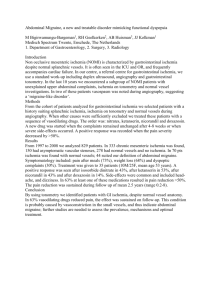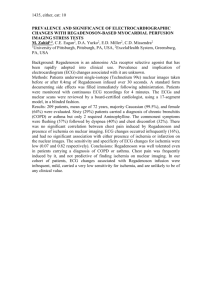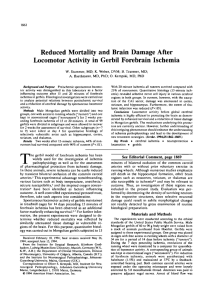DOCX ENG
advertisement
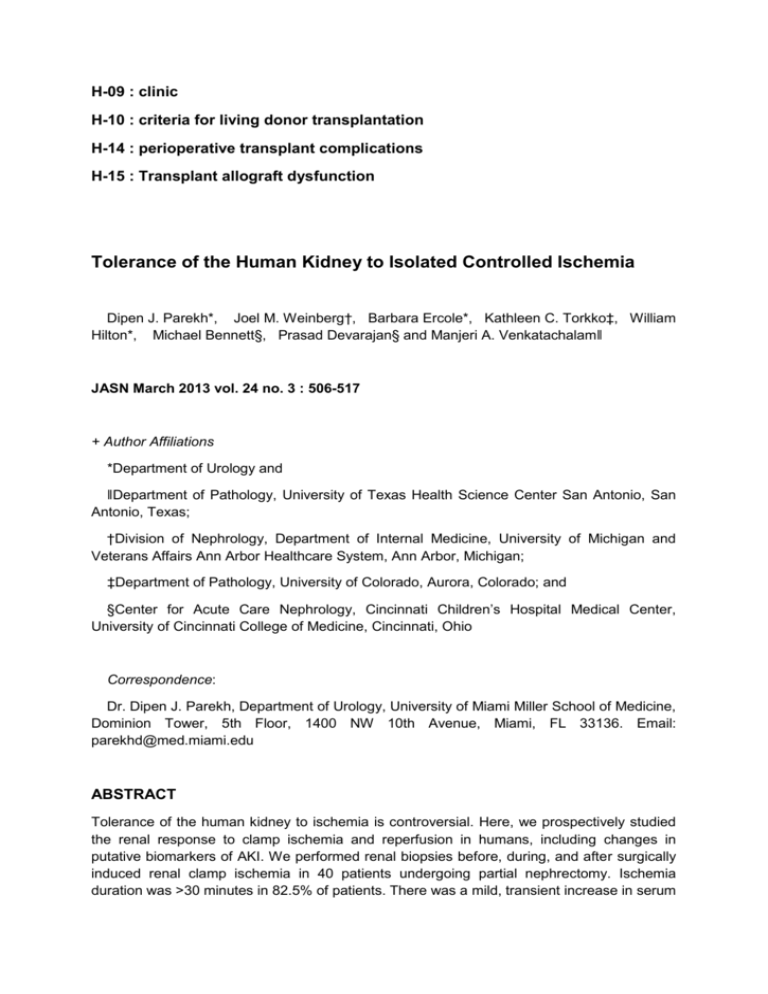
H-09 : clinic H-10 : criteria for living donor transplantation H-14 : perioperative transplant complications H-15 : Transplant allograft dysfunction Tolerance of the Human Kidney to Isolated Controlled Ischemia Dipen J. Parekh*, Joel M. Weinberg†, Barbara Ercole*, Kathleen C. Torkko‡, William Hilton*, Michael Bennett§, Prasad Devarajan§ and Manjeri A. Venkatachalam‖ JASN March 2013 vol. 24 no. 3 : 506-517 + Author Affiliations *Department of Urology and ‖Department of Pathology, University of Texas Health Science Center San Antonio, San Antonio, Texas; †Division of Nephrology, Department of Internal Medicine, University of Michigan and Veterans Affairs Ann Arbor Healthcare System, Ann Arbor, Michigan; ‡Department of Pathology, University of Colorado, Aurora, Colorado; and §Center for Acute Care Nephrology, Cincinnati Children’s Hospital Medical Center, University of Cincinnati College of Medicine, Cincinnati, Ohio Correspondence: Dr. Dipen J. Parekh, Department of Urology, University of Miami Miller School of Medicine, Dominion Tower, 5th Floor, 1400 NW 10th Avenue, Miami, FL 33136. Email: parekhd@med.miami.edu ABSTRACT Tolerance of the human kidney to ischemia is controversial. Here, we prospectively studied the renal response to clamp ischemia and reperfusion in humans, including changes in putative biomarkers of AKI. We performed renal biopsies before, during, and after surgically induced renal clamp ischemia in 40 patients undergoing partial nephrectomy. Ischemia duration was >30 minutes in 82.5% of patients. There was a mild, transient increase in serum creatinine, but serum cystatin C remained stable. Renal functional changes did not correlate with ischemia duration. Renal structural changes were much less severe than observed in animal models that used similar durations of ischemia. Other biomarkers were only mildly elevated and did not correlate with renal function or ischemia duration. In summary, these data suggest that human kidneys can safely tolerate 30–60 minutes of controlled clamp ischemia with only mild structural changes and no acute functional loss. COMMENTS Ischemia to the human kidney has been implicated as a common contributor to acute and chronic kidney injury from diverse medical and surgical causes. However, the direct effect of controlled ischemia on human renal structure and function has never been evaluated prospectively. Current understanding of renal ischemia is derived from animal studies, the renal transplant setting, and retrospective human studies that report conflicting data regarding the response and tolerance of the human kidney to ischemia Thanks to an efficient cooperation between surgeons and nephrologists, the study addresses three important issues: the tolerance of the human kidney to isolated controlled clamp ischemia, the nature of structural injury to the kidney that develops during and immediately after hilar clamping, and the behavior of biomarkers in this clinical scenario. In summary, this study provides the first detailed analysis of structural and functional responses of the human kidney to controlled clamp ischemia. It documents a greater than expected resistance to injury with little or no acute renal functional loss. Overall, variations of ischemic durations from 15 to 61 minutes had no effect on the injury produced, assessed functionally by creatinine and cystatin C, structurally by light and electron microscopic and immunofluorescence analysis, and by biomarkers excreted in the urine. Pr. Jacques CHANARD Professor of Nephrology

